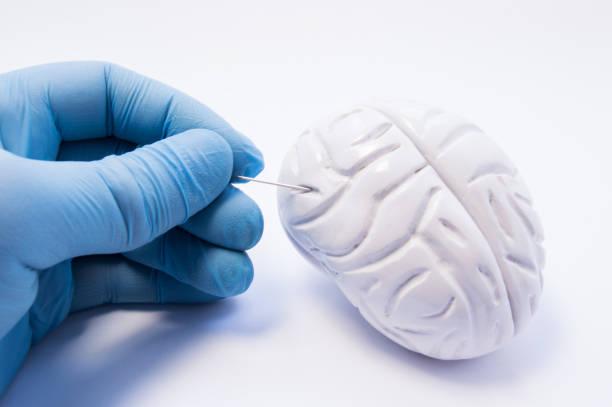Categories
- Bariatric Surgery (11)
- Black Fungus (5)
- Bone Marrow transplant (3)
- Brain Tumor Surgery Navigation Technology (20)
- Cardiac Surgery (66)
- Cardiology (97)
- Computer navigation technology for joint replacements (20)
- Covid Vaccination (17)
- Critical Care (2)
- Dental (19)
- Dermatology (31)
- Dialysis Support Group - “UTSAAH” (11)
- Dietitian (33)
- Emergency Medicine (4)
- Emotional Health (11)
- Endocrinology (33)
- ENT (20)
- Gastroenterology and GI Surgery (53)
- General and Laparoscopic Surgery (21)
- General Surgery (4)
- Gynecology & Obstetrics (183)
- Hematology (20)
- Internal Medicine (294)
- Kidney Transplant (50)
- Kidney Transplantation (20)
- Lung Cancer (8)
- Minimal Invasive Surgery (1)
- Mother & Child (20)
- mucormycosis (5)
- Nephrology (61)
- Neurology (147)
- Neurosurgery (68)
- Nutrition and Dietetics (107)
- Omicron Variant (1)
- Oncology (288)
- Ophthalmology (10)
- Orthopaedics & Joint Replacement (86)
- Paediatrics (59)
- Pediatric Nephrology (3)
- Physiotherapy (5)
- Plastic & Reconstructive Surgery (6)
- Psychiatry and Psychology (90)
- Psychologist (28)
- Pulmonology (72)
- Rheumatology (13)
- Spine Services (21)
- Transradial Angioplasty (16)
- Urology (84)
Query Form
Posted on Jul 1, 2022
What is a meningioma?
A meningioma is a tumor that forms in your meninges, which are three layers of tissue that cover and protect your brain and spinal cord. Meningiomas originate from arachnoid cells in particular, which are cells within the thin, spiderweb-like membrane that covers your brain and spinal cord. This is one of three layers that make up the meninges.
Most meningiomas aren’t cancerous (benign), though they can sometimes be cancerous (malignant). In general, if a tumor is cancerous, it means it’s aggressive, can invade other tissues and potentially spread to other parts of your body. A benign tumor won’t spread to other parts of your body.
Meningiomas are most often found near the top and the outer curve of your brain. They may also form at the base of your skull. Spinal meningiomas are rare.
Meningiomas tend to grow slowly and inward. Often, they’ll have grown quite large before they’re diagnosed. Even benign meningiomas can grow large enough to be life-threatening if they compress and affect nearby areas of your brain.

There are three types of meningioma by grade:
Grade I or typical: This is a benign meningioma that grows slowly. These tumors represent approximately 80% of cases.
Grade II or atypical: This is a noncancerous meningioma that grows more quickly and can be more resistant to treatment. These tumors represent approximately 17% of cases.
Grade III or anaplastic: This is a malignant (cancerous) meningioma that grows and spreads quickly. These tumors represent approximately 1.7% of cases.
There are several different types of meningiomas based on their location and tissue type. Some location examples include:
Convexity meningiomas, which grow on the surface of your brain and can exert pressure on your brain as they grow.
Intraventricular meningiomas, which grow within the ventricles of your brain. Your ventricles carry cerebrospinal fluid (CSF).
Olfactory groove meningiomas are located between your brain and nose at the base of your skull. They grow near your olfactory nerve, which is responsible for your sense of smell.
Sphenoid wing meningiomas, which form along a ridge of bone behind your eyes.
Is meningioma considered cancer?
In most cases, meningiomas are benign (noncancerous), but they can sometimes be cancerous (malignant). Even if a meningioma is benign, if it grows large enough, it can press on important nerves and structures of your brain, which can cause harm and even be life-threatening.
Who does meningioma affect?
Meningiomas much more commonly affect adults than children, although children can still develop them. The average age at diagnosis is 66 years.
People assigned female at birth (AFAB) are more likely to have a meningioma than people assigned male at birth (AMAB). This is likely due to hormonal factors that contribute to the development of meningiomas.
However, malignant (cancerous) meningiomas are found more often in people AMAB.
What are the symptoms of meningioma?
Because meningiomas are typically slow-growing tumors, they may not cause noticeable symptoms until they grow large enough to push on important structures around them. The symptoms of meningioma can vary greatly depending on which part of your brain is affected by it.
Common symptoms of brain meningiomas include:
- Headaches.
- Dizziness.
- Nausea and vomiting.
- Changes in your vision, such as double vision, blurriness or loss of vision.
- Hearing loss.
- Seizures.
- Behavioral or personality changes.
- Memory problems.
- Overactive or overresponsive reflexes (hyperreflexia).
- Muscle weakness in certain areas of your body.
- Paralysis in certain areas of your body.
The most common symptoms of spinal meningiomas include:
- Pain at the location of the tumor.
- Radiculopathy.
- Neurological issues, such as weakness, poor muscle tone (hypotonia) and decreased or absent reflex responses (hyporeflexia).
If you’re experiencing any of these symptoms, it’s important to tell your healthcare provider as soon as possible.
What causes a meningioma?
Scientists don’t yet know the exact cause of meningiomas. Research has shown that 40% to 80% of all meningiomas have an abnormality in chromosome 22, which is involved in the suppression of the growth of tumors. This overwhelmingly occurs spontaneously (randomly) or rarely as part of certain genetic (inherited) conditions.
So far, scientists have identified certain environmental, hormonal and genetic risk factors for meningiomas.
How is a meningioma diagnosed?
A meningioma can be difficult to diagnose because it often grows slowly and often doesn’t cause symptoms until it’s big enough to affect neighboring areas of your brain. In addition, the majority of meningiomas are slow growing and mainly affect adults. The symptoms may be so mild that the affected person and/or their healthcare provider may attribute them to the normal signs of aging.
If your healthcare provider suspects you may have a meningioma, they’ll likely refer you to a neurologist.
To diagnose a meningioma, your healthcare provider will perform a physical examination and a neurological examination. They’ll also recommend imaging tests, such as:
Brain MRI (magnetic resonance imaging): The best imaging test to diagnose meningioma is a brain MRI scan with contrast. An MRI scan is a painless test that produces very clear images of the organs and structures inside of your body using a large magnet, radio waves and a computer. MRI with contrast helps improve the diagnostic quality of the images. MRI contrast agents contain a rare earth metal called gadolinium that interacts with the magnetic field emitted by the MRI machines.
CT (computed tomography) scan: If you can’t undergo an MRI, your healthcare provider will likely recommend a head CT scan with contrast. CT scans create detailed images of the structures inside of your body using X-rays and computers. The contrast agent, sometimes called a dye, improves the images by highlighting certain features. You’ll either drink the contrast agent or your healthcare provider will inject it into a blood vessel through an IV.
Sometimes, if the diagnosis is in doubt, a biopsy may be needed to confirm the diagnosis of meningioma and exclude other possible diagnoses. Your neurosurgeon will perform the biopsy to obtain a small tissue sample. The tissue sample will be examined to establish a diagnosis, determine whether the tumor is benign or malignant, and decide on a tumor grade.
How are meningiomas treated?
Treatment for meningiomas is highly individualized and will likely involve a combination of the following therapies:
- Observation (“wait and see”).
- Surgery.
- Radiation therapy.
- Palliative care.
- Chemotherapy (rarely).
- Together, you and your healthcare team will determine the best treatment plan for you.
Observation
Healthcare providers often use the “wait-and-see” observation approach for several reasons, including:
- If you don’t have any symptoms and the tumor is small.
- If you have few symptoms and little or no swelling in the neighboring brain areas.
- If you have mild or minimal symptoms and have a long history of tumors without much negative effect on your quality of life.
- If you’re older and have very slow-progressing symptoms.
- If treatment carries a significant risk to your health and life.
- Your healthcare provider will suggest follow-up MRI scans and appointments to monitor the size of the tumor and your symptoms. Some tumors won’t grow any larger.
Surgery
Surgical resection, which is the surgical removal of a tumor, is the primary choice for symptomatic meningiomas or large tumors that are anticipated to cause symptoms soon.
A total removal (also called gross total resection, or GTR) can cure the majority (about 70% to 80%) of people with meningiomas. The goal of surgery is maximum, safe removal. The ability to achieve this may be limited by various factors, including:
Tumor location - If the tumor is connected to brain tissue or surrounding veins.
Factors that affect the safety of surgery in general.
The extent of resection largely impacts the rates of recurrence (of the tumor returning) for surgically treated meningiomas of all grades.
Radiation therapy
Radiation therapy is a form of cancer treatment that uses radiation (strong beams of energy) to kill cancer cells or keep them from growing and dividing. Radiation therapy is also useful in treating some benign tumors, including benign meningiomas.
Radiation therapy is the first-line treatment for meningiomas that can’t be fully removed or when the risk of surgery outweighs the potential benefit. These include certain deeply located meningiomas and those that are encasing neurovascular structures.
Types of radiation therapy to treat meningiomas include:
Stereotactic radiosurgery (SRS): Stereotactic radiosurgery is a nonsurgical, high-intensity form of radiation used to treat brain tumors. It can deliver precisely targeted radiation in fewer high-dose treatments than traditional therapy, which can help preserve healthy tissue. SRS can be used for meningiomas of the skull base, partially removed meningiomas or those that recur (return).
External beam radiation therapy (EBRT): EBRT is the most common form of radiation therapy. Beams of high-energy radiation are directed at the tumor.
Brachytherapy: Brachytherapy is a form of radiation therapy used to treat various cancers. Treatment involves surgically placing radioactive seeds, capsules or other implants directly in or near the tumor.
Adjuvant radiotherapy for atypical and cancerous meningiomas improves control of the tumor’s growth with longer progression-free survival and overall survival. Adjuvant therapy, sometimes called helper therapy, targets cancer cells that primary treatment didn’t destroy. Adjuvant radiotherapy after total surgical removal of atypical meningiomas may decrease the risk for recurrence (when the tumor comes back).
Palliative care
Meningioma and its treatment cause physical symptoms and side effects, as well as emotional and social issues. Managing all of these effects is called palliative care. It’s an important part of your care that’s included along with treatments intended to slow down, stop or eliminate the tumor.
Palliative care focuses on improving how you feel during treatment by managing symptoms and supporting you and your family. Palliative treatments vary widely and often include:
- Medication.
- Nutritional changes.
- Relaxation techniques.
- Emotional and spiritual support.
- Procedures to improve neurological function and quality of life.
- Other therapies.
Chemotherapy
Chemotherapy is one of several cancer treatments that use drugs against various types of cancer. Although the use of chemotherapy is rare in treating meningiomas, healthcare providers generally recommend chemotherapy for people who develop recurrent or progressive meningiomas that no longer respond to surgery or radiation therapy.
The use of bevacizumab, a type of chemotherapy, for people with anaplastic meningiomas after surgical resection and radiation therapy, has shown successful results in tumor regression.
What are the possible complications and side effects of meningioma treatment?
The treatment options for meningiomas come with certain risks and possible complications and side effects. Be sure to ask your healthcare team questions about the risks involved with your treatment plan.
Possible complications of meningioma surgery
Surgery to partially or fully remove a meningioma is a complex procedure that’s not without certain risks and complications. As with any type of surgery, there’s a risk of infection and bleeding. Other possible complications include:
Brain swelling after surgery, which can lead to brain damage.
Injury to cranial nerves, which, depending on the meningioma location, can affect a variety of functions such as your sight, ability to move your face or ability to swallow.
Fluid buildup around your brain after surgery (cerebral edema), which can lead to brain damage.
Accidental damage to normal brain tissue, which can cause issues with your ability to think, see or speak.
Possible side effects of radiation therapy for meningioma treatment
While the radiation treatment process for meningioma treatment itself isn’t painful, it can cause certain side effects when healthy tissues are exposed to radiation.
The most common side effects of radiation therapy for meningioma include:
- Mild skin reactions and hair loss.
- Fatigue.
- Cognitive changes, such as difficulty thinking clearly and mild memory loss.
- Loss of appetite.
- Headaches.
Aside from the cognitive symptoms, which can be permanent, most of these side effects are temporary and usually go away within several weeks of treatment.
Possible side effects of chemotherapy for meningioma treatment
The side effects of chemotherapy for meningioma depend vary based on each person and the type and dose of the chemotherapy. Side effects can include:
- Fatigue.
- Higher risk of infection.
- Nausea and vomiting.
- Hair loss.
- Loss of appetite.
- Diarrhea.
What are the risk factors for meningioma?
The risk factors for meningioma include:
Your age: Meningioma is most common in adults age 65 or older, and your risk increases with age.
Your sex: People assigned female at birth (AFAB) are about twice as likely as people assigned male at birth (AMAB) to develop noncancerous meningioma. Scientists believe this has to do with exposure to female sex hormones. Use of hormone replacement therapy and/or birth control pills and breast cancer may also increase your risk.
Radiation exposure: Prior radiation to your head may increase your risk of developing meningioma.



